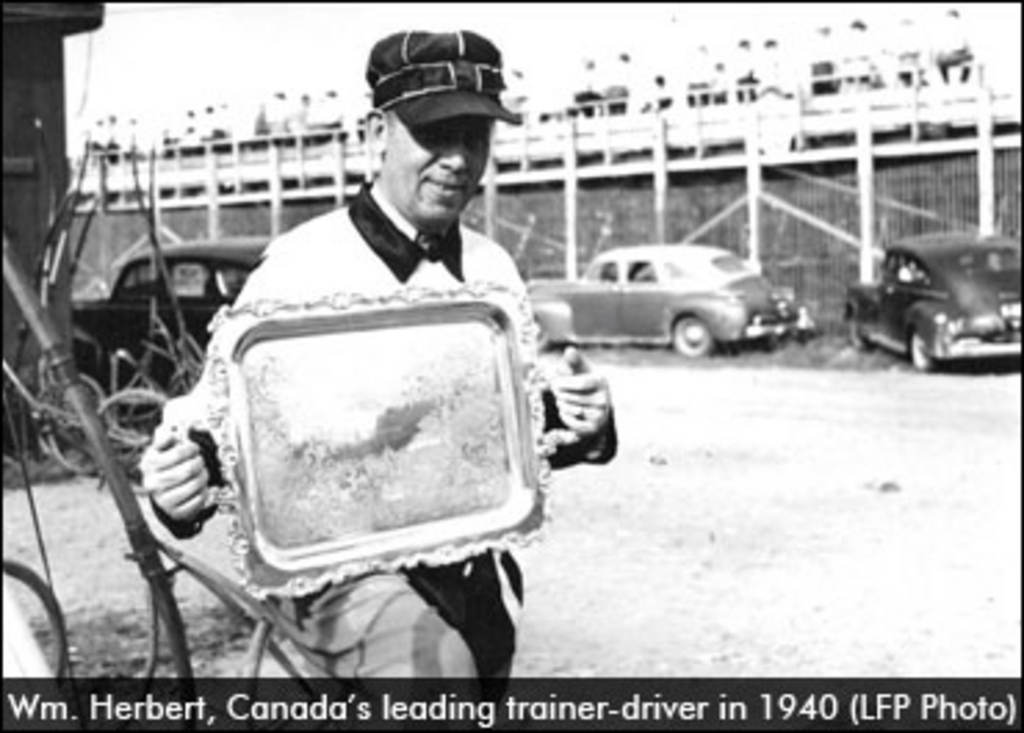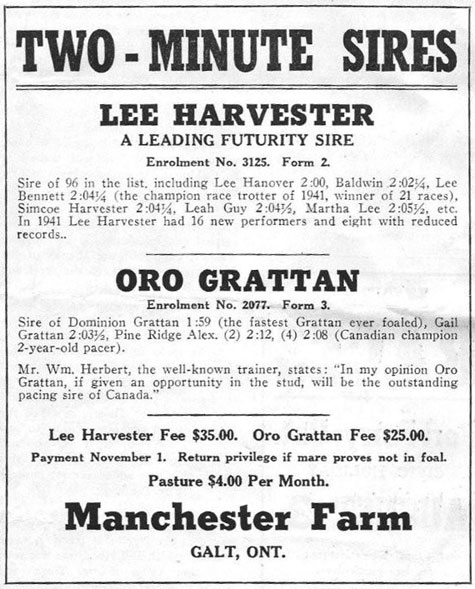
In this week's Rewind Robert Smith reveals some interesting statistics and commentary from the world of Canadian Harness Racing from 1940
which was 70 years ago.
In days gone by it was customary that a sort of "State of the Union" message was issued shortly after the beginning of each year by the standing President of the C.T.A. The message from the highest ranking officer contained the usual type of synopsis of what had passed in the previous year and what was proposed or hoped for in the coming year. In 1940 the C.T.A. President was Mr. F. S. Scott of Galt, Ont., a former M.P. and the owner of Manchester Farms arguably the sport's top breeding and racing establishment of that era.
In his address at the Royal York Hotel in Toronto he expressed his concern for the sport but moreover for the Country itself which of course was at war. Several of the large Fairs had to be cancelled due to wartime restrictions and also a number of Fairgrounds were being used as military headquarters. Also many young men previously engaged in the sport had been called into the Services. He urged communities to continue their fairs wherever possible because of their educational value and stimulating effect on agriculture. On a personal note he admitted feeling a bit guilty about raising and racing horses during such troubled times. However he stated that due to the nature of the business it was not something that could immediately be restored following the war. On a more practical matter he spoke at length about the problems with the starting of races and stated that the old open scoring methods were of major concern. One possibility was even proposed suggesting the starting horses on the backstretch, away from the crowds.
As part of the proceedings, a brief statistical summary was often included, containing the facts and figures of the year just completed. I find it extremely interesting to look back at the numbers from those days so many years ago and see how far we have travelled. The stats were produced by a gentleman named William "Billy" Lawrason, a kind of one man show within the C.T.A. His position must have been quite important as his annual salary was a matter of public record and at this time he received the princely sum of $600 per year for his yeoman service.
While the statistics of 70 years ago bear little relevance to today's world, they do make for interesting conversation. The sport's leading money winning horse in 1940 was a three-year-old trotting filly named Pine Ridge Celia. Her bankroll of $1,841 was greatly enhanced by her record setting performance in that year's Futurity raced at Strathroy, Ont., driven by the season's leading horseman Bill Herbert. She won all three heats and set a new record for her age and gait of 2:12. The effort reduced the Canadian mark by 1/4 second and the Futurity standard by a full second. Her stable-mate Pine Ridge Bill with Lew James driving was second in all three heats. This showing alone helped to buoy the connection's earnings to the top of the heap at almost $4,600.
 Statistics For The 1940 Racing Season
Statistics For The 1940 Racing Season
Purses Raced for Under C.T.A. Meetings
Western Canada - $15,701.00
Quebec - $29,005.36
Maritime Provinces - $1,800.00
Ontario - $56,640.37
Total - $103,146.73
Top 10 Money Earners
Pine Ridge Celia - $1,840.90
Ex Ra - $1,155.30
Iola Grattan - $1,043.28
Bert Patch - $955.45
Leah Guy - $840.60
Pine Ridge Alex - $794.10
Chestnut Bars - $792.80
Tom Grattan - $786. 65
Beatrix Lee - $724.55
Fred Grattan - $683.51
Note: A total of 23 horses won in excess of $500 for the season. All three of the horses earning in excess of $1,000 were Futurity winners.
Leading Money Winning Stable
Pine Ridge Stables; London, Ont., - $4,589.50
(Owner - Alex Parsons)
Leading Money Winning Trainer & Driver
William H. Herbert (age 41), London, Ont.
(Trainer for Pine Ridge Stables)
Leading Race Winners
Lord Grattan - 11 races
Iola Grattan - 10 races
Although not part of the statistics at the time I would like to add a little something. By this time two young boys, still in their late teens, were on the scene and beginning to draw attention. These precocious young lads were Keith Waples and John (not yet Dr. ) Findley. A brighter future was surely in sight.

